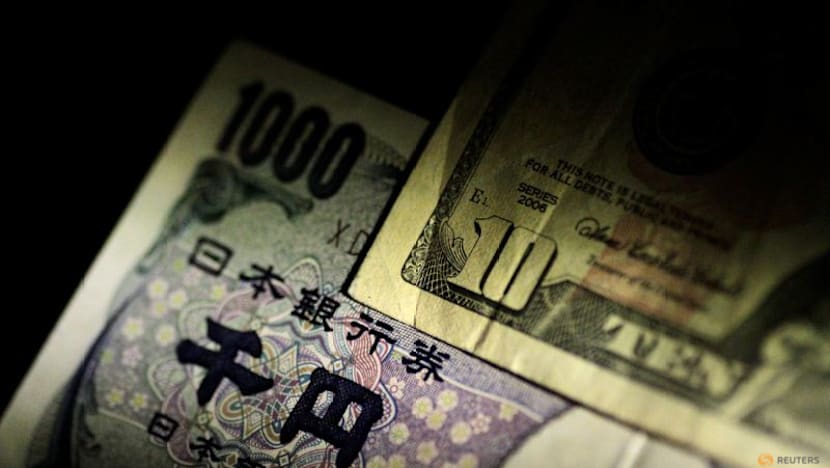Business
Yen and Euro Fall Against Dollar Amid Leadership Changes

The Japanese yen and the euro weakened against the US dollar on October 2, 2023, driven by concerns over fiscal and political stability in Japan and France. The yen fell after the ruling Liberal Democratic Party elected conservative Sanae Takaichi as its new leader, while France’s government resigned just hours after its formation under Prime Minister Sebastien Lecornu.
Takaichi’s selection, announced over the weekend, is seen as a continuation of former Prime Minister Shinzo Abe‘s “Abenomics” strategy, which advocates for aggressive fiscal spending and monetary easing. Following her election, traders adjusted their expectations regarding potential interest rate hikes by the Bank of Japan. “It was unexpected that it was going to be Takaichi,” noted Sarah Ying, head of FX strategy at CIBC Capital Markets in Toronto. “There’s a little bit more focus on the back end of the curve now, just given that Takaichi is generally seen as a follower of Abenomics. The market expects a little bit more fiscal stimulus there.”
In response to these developments, the dollar surged more than 2 percent to a peak of 150.47 yen, marking its highest level since August 1. It concluded the trading day at 149.86 yen, reflecting a significant daily gain. The euro also reached 176.25 yen, the highest since the euro’s inception in 1999, before settling at 175.38 yen, up 1.28 percent.
The euro faced additional pressure following the resignation of Lecornu and his cabinet, which became the shortest administration in modern French history. This political upheaval raised concerns about domestic stability and budgetary issues, although analysts do not view it as a major existential crisis. Ying commented, “The biggest risk is really if President Macron resigns, but it doesn’t seem to be a high-risk scenario.”
Against the US dollar, the euro decreased by 0.35 percent to $1.1699, hitting a low of $1.1649 earlier in the day, the weakest point since September 25. It also dipped against the pound, reaching its lowest level since September 18. The dollar index rose by 0.5 percent to 98.16 as traders anticipate possible shifts in US monetary policy.
Investors are closely monitoring the US government shutdown, which has stalled key economic data, including the September jobs report. The Federal Reserve is widely expected to reduce interest rates by 25 basis points during its upcoming meeting on October 28-29, particularly in light of indicators showing a weakening labor market. According to the CME Group’s FedWatch Tool, there is an 82 percent probability of another rate cut in December, contingent on forthcoming economic data.
In the cryptocurrency market, Bitcoin saw a 1.98 percent increase, reaching $125,208 after hitting a record high of $125,653 on October 1. The fluctuations in both traditional and digital currencies reflect the broader economic uncertainties influenced by political developments across major economies.
-

 Business5 months ago
Business5 months agoKenvue Dismisses CEO Thibaut Mongon as Strategic Review Advances
-

 Lifestyle4 months ago
Lifestyle4 months agoHumanism Camp Engages 250 Youths in Summer Fest 2025
-

 Sports4 months ago
Sports4 months agoDe Minaur Triumphs at Washington Open After Thrilling Comeback
-

 Sports5 months ago
Sports5 months agoTupou and Daugunu Join First Nations Squad for Lions Clash
-

 Top Stories5 months ago
Top Stories5 months agoColombian Senator Miguel Uribe Shows Signs of Recovery After Attack
-

 World5 months ago
World5 months agoASEAN Gears Up for Historic Joint Meeting of Foreign and Economic Ministers
-

 Health4 months ago
Health4 months agoNew Study Challenges Assumptions About Aging and Inflammation
-

 Business5 months ago
Business5 months agoOil Prices Surge Following New EU Sanctions on Russia
-

 Entertainment4 months ago
Entertainment4 months agoDetaşe-Sabah Violin Ensemble Captivates at Gabala Music Festival
-

 Entertainment4 months ago
Entertainment4 months agoBaku Metro Extends Hours for Justin Timberlake Concert
-

 Top Stories5 months ago
Top Stories5 months agoRethinking Singapore’s F&B Regulations Amid Business Closures
-

 Business5 months ago
Business5 months agoU.S. House Approves Stablecoin Bill, Sends to Trump for Signature









